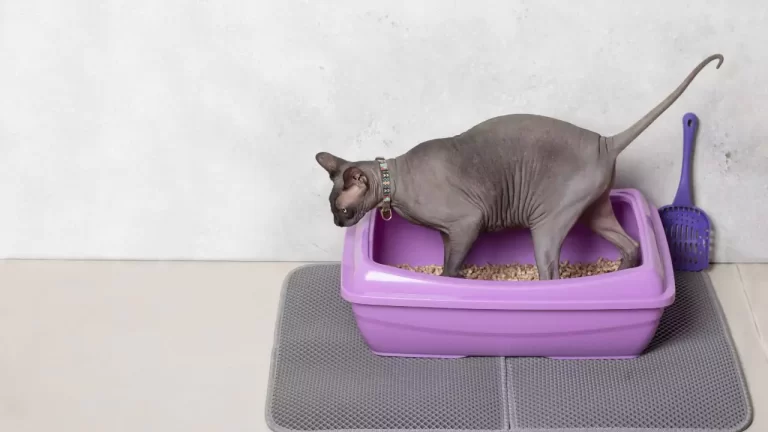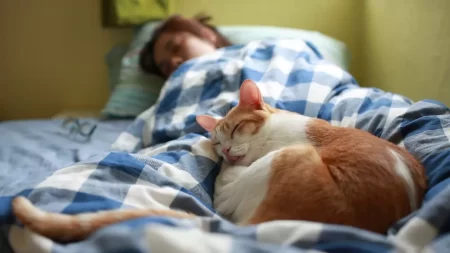Can you potty train a kitten? Yes, you can. Potty training a kitten is not as difficult as it may seem. Kittens are naturally clean animals and they instinctively want to use a designated place for their waste. However, they need some guidance and encouragement from their owners to learn how to use a litter box properly.
In this article, we will explain when to start litter training, what materials you need, what steps to follow, and how to troubleshoot any problems that may arise.
When to Start Litter Training?
The best time to start litter training a kitten is when they are around 3 weeks old. This is when they start to explore their surroundings and develop their motor skills. They are also more receptive to learning new behaviors at this age.
Another indicator of when to start litter training is when the kitten begins to eat solid food. This is usually when they are around 4 to 6 weeks old. Solid food will make their stools more solid and easier to scoop out of the litter box.
Materials Needed for Litter Training
The essential materials you need for litter training a kitten are:
- A litter box: This is where the kitten will do their business. You should choose a litter box that is large enough for the kitten to move around comfortably, but not too big that they feel overwhelmed. You should also choose a litter box that has low sides, so that the kitten can easily get in and out. You can use a cardboard box, a plastic tray, or a commercial litter box for this purpose.
- Litter: This is the material that fills the litter box and absorbs the urine and odor. You should choose a litter that is unscented, dust-free, and clumping. Unscented litter will not irritate the kitten’s nose or lungs. Dust-free litter will not cause respiratory problems or allergies. Clumping litter will make it easier to clean the litter box and monitor the kitten’s health. You can use clay, corn, wheat, or wood-based litter for this purpose.
- Positive reinforcement: This is the reward that you give the kitten when they use the litter box correctly. You should use something that the kitten likes, such as treats, toys, or praise. Positive reinforcement will motivate the kitten to repeat the desired behavior and form a positive association with the litter box.
Steps for Litter Training a Kitten
The basic steps for litter training a kitten are:
Choosing the Right Location for the Litter Box
You should place the litter box in a quiet, accessible, and safe place. You should avoid placing it near the kitten’s food, water, or bed, as they may not want to soil their eating or sleeping area. You should also avoid placing it in a noisy, busy, or scary place, such as near a washing machine, a door, or a window, as they may get distracted or frightened. You should have one litter box per kitten, plus one extra, and spread them throughout the house, so that the kitten can always find one when they need to go.
Introducing the Kitten to the Litter Box
You should show the kitten where the litter box is and let them explore it on their own. You should not force them to go inside or stay inside the litter box, as they may develop a negative association with it. You should gently place the kitten in the litter box after they wake up, after they eat, and after they play, as these are the times when they are most likely to need to go. You should also watch for signs that the kitten is about to go, such as sniffing, scratching, or squatting, and quickly take them to the litter box. You should praise the kitten when they use the litter box and give them a treat or a toy as a reward.
Daily Maintenance
You should keep the litter box clean and fresh at all times. You should scoop out the clumps and solid waste at least once a day, and change the litter completely once a week. You should also wash the litter box with mild soap and water once a month, and dry it thoroughly before refilling it with litter. You should avoid using harsh chemicals, bleach, or ammonia to clean the litter box, as they may leave a strong smell that may deter the kitten from using it. You should also provide fresh water and food for the kitten every day, and keep their bedding clean and cozy.
Patience During the Training Process
You should be patient and consistent with the kitten during the litter training process. You should not scold, punish, or yell at the kitten if they have an accident, as this may make them fearful or confused. You should also not rub their nose in their mess, as this may cause health problems or infections. You should instead calmly clean the area with an enzymatic cleaner that removes the odor and stain, and prevent the kitten from accessing that spot again. You should also reinforce the positive behavior by rewarding the kitten when they use the litter box correctly.
Troubleshooting Litter Box Training
Sometimes, litter training a kitten may not go as smoothly as expected. There may be some challenges or issues that may prevent the kitten from using the litter box consistently. Some of the common reasons and solutions for litter box training problems are:
Medical Reasons for Accidents
If the kitten suddenly stops using the litter box, or starts to urinate or defecate outside the litter box frequently, there may be a medical reason behind it. The kitten may have a urinary tract infection, a kidney disease, a bladder stone, a constipation, a diarrhea, or a parasite infection that may cause them pain or discomfort when using the litter box. You should take the kitten to the vet as soon as possible to diagnose and treat the underlying condition. You should also keep the litter box extra clean and comfortable for the kitten during their recovery.
DIY Solutions for Hidden Litter Boxes
If the kitten prefers to use a hidden or secluded place for their waste, such as under the bed, behind the couch, or in a closet, there may be a behavioral reason behind it. The kitten may feel insecure, stressed, or threatened by something or someone in their environment, such as a new pet, a new person, a loud noise, or a change in routine. You should try to identify and eliminate the source of stress for the kitten, and provide them with a safe and comfortable place to relax and hide. You should also create a hidden litter box for the kitten by cutting a hole in a cardboard box, a plastic bin, or a furniture piece, and placing it in their preferred spot. You should make sure that the hidden litter box is large enough, well-ventilated, and easy to clean.
Professional Guidance for Persistent Issues
If the kitten continues to have litter box problems despite trying the above solutions, there may be a more complex or deep-rooted reason behind it. The kitten may have a psychological or emotional issue, such as anxiety, depression, or trauma, that may affect their litter box habits. You should consult a professional animal behaviorist or a cat trainer who can help you understand and address the kitten’s needs and challenges. You should also follow their advice and recommendations on how to modify the kitten’s behavior and environment to improve their litter box success.







